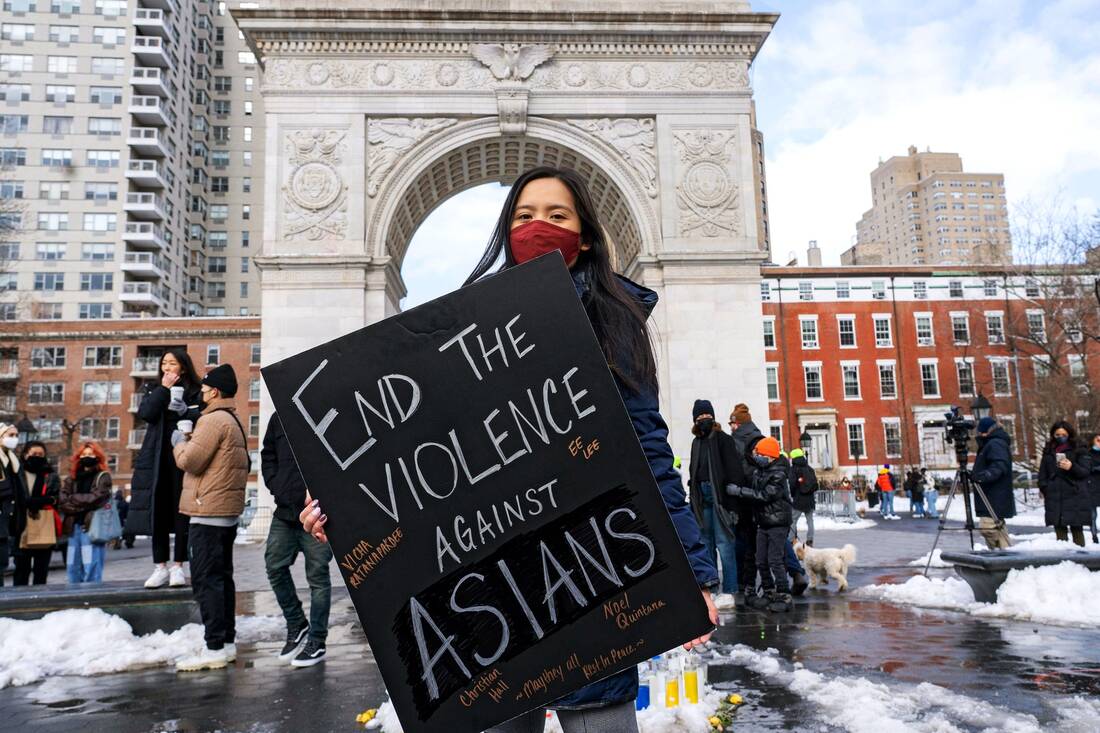|
By Heather Zhu ’23 (Image Credit: Anti-Asian Violence Source_ New Yorker) The recent March 16, 2021 shooting in Atlanta has brought a new wave of anti-Asian violence into the public eye. Although it is true that the pandemic led to an upsurge of Asian targeted hate crimes, COVID-19 was certainly not the only culprit in creating a platform for this violence. The history of anti-Asian violence can be traced far back into the nation’s history. As early as 1875, the country’s very first restrictive immigrant law -- The Chinese Exclusion Act -- was aimed at Chinese immigrants. The significance of this act lies not in its effects on the Chinese immigration process, but in the fact that it marked the beginning of sexualizing Asian women. In modern history, more than 70,000 Japanese Americans were faced with the danger of internment by the US government after the Pearl Harbor attack.[1] Following the Vietnam War, Southeast Asian war refugees became the victims of hate crimes, discrimination and attacks from white supremecist groups such as the Ku Klux Klan.
In 1982, Vincent Chin, a Chinese American, was beaten to death by two autoworkers in Detroit simply because they thought he was Japanese. The two murderers were sentenced with zero time in prison, which soon fueled activism for Asian American rights. The original sentence was overruled -- this was perhaps the very first time Asian Americans were protected federally as a class. In recent years, more and more racial violence has been reported: in January, an 84 year old Thai man died during an assault in San Francisco; in March, a 23 year old woman was punched in the face while walking on the streets of New York; a 91 year old man was shoved to the ground in Oakland Chinatown; a 16 year old boy was accused of having the “Chinese virus” and bullied on his school bus. From March of 2020 to February of 2021, more than 2800 cases of anti-Asian assaults were reported to the Asian American and Pacific Islander (AAPI) organization including both physical and verbal assaults.[2] In fact, hate crimes targeting Asians increased by nearly 150% amid the emergence of COVID-19 in 2020.[3] Just two weeks ago, the Atlanta shooting resulted in the death of six Asian women. This reflects the lasting impacts of the aforementioned Chinese Exclusion Act and the spreading of bias and perhaps the white-supremicism it has catalyzed. Sexualization of, and prejudice against, Asian women are used as excuses for murder, sexism, racism and even misogyny. The Coronavirus has been racially categorized, being called the ‘Chinese virus’ or the ‘Kung flu’. Teenagers in San Francisco have even initiated racial violence challenges such as the ‘slap an Asian challenge’. Asian Americans have never been excluded from the process of racialization, and anti-Asian violence has never stopped; yet, the ‘model minority’ label might have shied Asians away from speaking up for themselves. People watch with apathy as Asians are being spat on, yelled at, and assaulted. Pressing injuries finally bring to the forefront deep-rooted racism towards Asians. Now, more than ever, this needs to stop. Sources: Cheng, Anne Anlin. "Opinion | What This Wave Of Anti-Asian Violence Reveals About America". Nytimes.Com, 2021, https://www.nytimes.com/2021/02/21/opinion/anti-asian-violence.html. Mineo, Liz. "A Long History Of Bigotry Against Asian Americans". Harvard Gazette, 2021, https://news.harvard.edu/gazette/story/2021/03/a-long-history-of-bigotry-against-asian-americans/. Accessed 29 Mar 2021. Yam, Kimi. "Anti-Asian Hate Crimes Increased By Nearly 150% In 2020, Mostly In N.Y. And L.A., New Report Says". NBC News, 2021, https://www.nbcnews.com/news/asian-america/anti-asian-hate-crimes-increased-nearly-150-2020-mostly-n-n1260264. [1] Mineo [2] Cheng [3] Yam Comments are closed.
|
Photos from Verde River, Manu_H, focusonmore.com, Brett Spangler, Cloud Income

